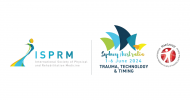Session outline
The expansion of the aging population of individuals living with disabilities has led to a diversification of chronic disease, including increased prevalence of aging-related multimorbidity and frailty. Early screening and continued health promotion efforts for healthy aging in persons with disabilities are vital to reduce the escalating burden associated with chronic disease clustering and worsening function and participation. Despite a paucity of evidence, health-related physical fitness and activity are thought to have a positive effect on health in individuals with physical and cognitive disabilities. According to the 2018 Physical Activity Guidelines for Americans [U.S. Department of Health and Human Services], the benefits of physical activity for stroke survivors and people with spinal cord injury, multiple sclerosis, Parkinson’s disease, muscular dystrophy, cerebral palsy, traumatic brain injury, limb amputations, mental illness, intellectual disability, and Alzheimer’s disease and other dementias include improved cardiovascular and muscle fitness, improved brain health, and better ability to do tasks of daily life. Sufficient evidence exists to recommend that adults with disabilities should do regular physical activity. This workshop will integrate information based on research and ongoing clinical practice from the constituent members of the newly formed ISPRM Task Force on Physical Activity for Persons with Disabilities (PAPD). Guidelines and considerations for physical activity for persons with disabilities through the lifespan will be a central focus of this symposium. In addition, viable physical interventions that may lessen the health burden of aging with physical (congenital and acquired), cognitive, and age-related frailty disability will be presented, as well as ongoing global efforts to increase physical activity for persons with disability. Finally, concerns about accessibility in the clinical and built environment as they relate to physical activity for persons with disability will be addressed.
Learning outcomes
- Appreciate the need for physical activity (PA) for persons with disabilities (PWD) and the role of prescribing PA in management
- Understand global initiatives regarding increasing PA for PWD
- Be able to apply guidelines for PA for PWD and appreciate the barriers and facilitators to accessibility– both in the clinic and in the practice of PA
Target audience
While this workshop discusses the prescription of PA for PWD, it is not solely of interest to clinicians and those working in healthcare. We believe that considerations around PA for PWD should be of interest to the general public as well given the highly prevalent nature of disability and that concerns for accessibility in public spaces– not just healthcare– are part of the considerations one must take when considering PA for PWD.
- Allied health
- Medical practitioners
- Students
- Trainees
- Nursing staff
- General public



